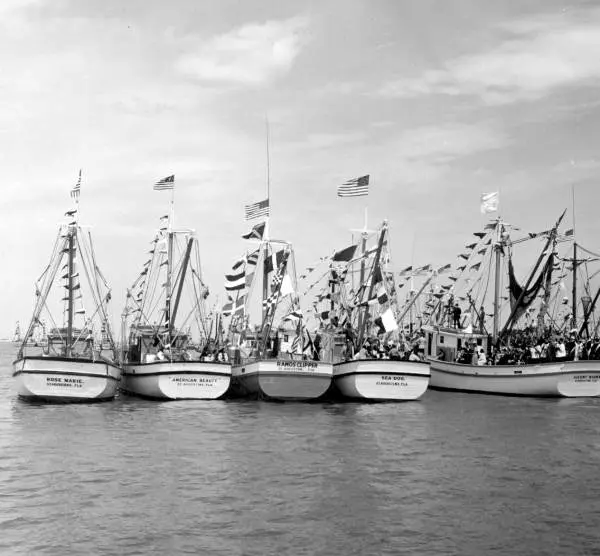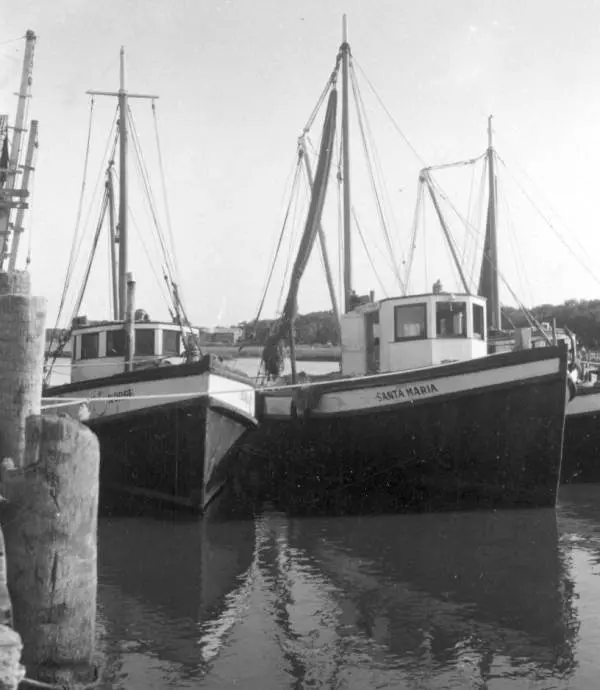There’s something distinctly Floridian about watching shrimp boats trawling our coastal waters, particularly in the northeastern part of the state. Shrimping and shrimp boat building have been an important part of the culture of St. Augustine and Fernandina Beach for more than a century.
“Mike Salvador was a fisherman, he was a mariner, he was an entrepreneur,” says maritime historian Brendan Burke, co-author of the book “Shrimp Boat City: 100 Years of Catching Shrimp and Building Boats in St. Augustine, the Nation’s Oldest Port.” “In Fernandina in the first decade of the twentieth century, he assembled what I would consider to be the greatest maritime chapter in Florida’s state history.”
The shrimping industry that Salvador helped to established involved thousands of people. Families from diverse cultural backgrounds were part of the birth and growth of Florida’s shrimping industry in the early to mid-twentieth century.
“You have African American families that that are getting into the enterprise in fish houses, as labor on the boats, and as owners of some of the boats,” Burke says. “You have Greek immigrant families that are building boats, mostly in Fernandina and St. Augustine but other places as well, like Tarpon Springs. You have Italian immigrant families that are coming either directly from Italy or transmigrating from places up north like the Fulton Fish Market in New York.”
New York’s Fulton Fish Market was an integral part of Florida’s shrimping industry, distributing the tons of shrimp being caught in Florida waters to restaurants and dinner tables around the world. The shrimp would make it to the market via the railroad and the growing interstate road system.
There was a “boom” in Florida’s shrimping industry in the 1940s and ‘50s as the population of the state increased dramatically after World War II, and demand for shrimp increased.
“Shrimp were mostly an ethnic food prior to the 1920s, ‘30s, and 40s,” says Burke. “Maybe you would have heard of a shrimp cocktail in the big cities, but if you’re in Omaha, or if you’re in Des Moines, or if you’re in Topeka, you probably didn’t eat shrimp habitually. After the war, you had all these young men and women who traveled around the country, around the world, and they’d met other people and they learned to do strange things like eat shrimp. The war changed us in many ways, but it changed what we put on our plates. St. Augustine and a lot of other port towns, started to supply that need.”
Gradually the emphasis in St. Augustine shifted from catching shrimp to building the boats to do it. In the mid-twentieth century, shrimp boats left St. Augustine for richer fishing grounds in Louisiana, southwest Florida, Mexico, and elsewhere.
“What stayed in St. Augustine was the ability to build the boats that supplied the fleets,” says Burke. “Between 1919 and 1985, I can account for about thirty-five hundred boats that were built in town that went all over the place. We built boats for 23 countries around the world. We shipped them out almost by the dozen. They were rarely built on speculation; they were a well-known quantity. That’s a legacy that Florida has left on global fishing and global foodways.”
Brendan Burke is a maritime historian with the St. Augustine Lighthouse Archaeological Maritime Program. He co-wrote the book “Shrimp Boat City” with Ed Long.
“He worked in and around the industry for most of his professional life. He was in the Coast Guard, he was always on the water, always on the docks, and he saw and met and heard the people, the things, and the stories of the industry. In the 1980s he realized that he was seeing fewer people, hearing fewer stories, and seeing fewer boats. Something transformative was happening, and the industry was in decline. It was dying.”
Long and Burke started documenting the stories of St. Augustine’s shrimping industry and collected that information into a book. They also helped to create an exhibit at the St. Augustine Lighthouse Museum.
Florida’s shrimping industry still exists, but reached its peak in the 1980s.
“Today, if you put ten shrimp on a plate, only one of them will be wild caught American shrimp,” says Burke.

